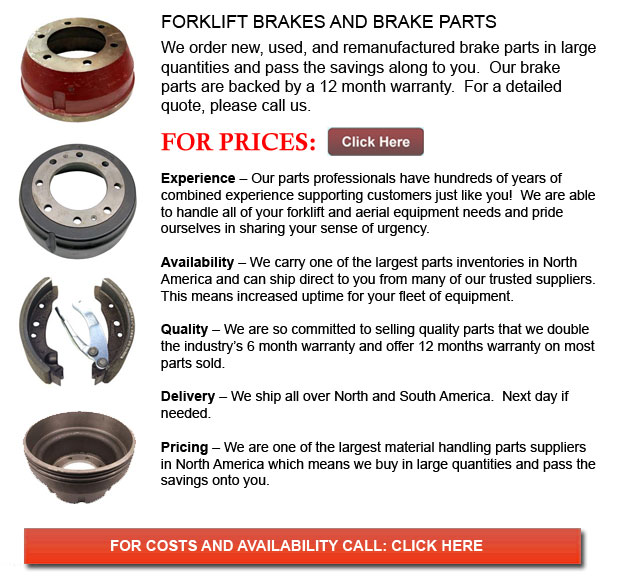
Forklift Brake - A brake in which the friction is provided by a set of brake pads or brake shoes that press against a rotating drum shaped unit known as a brake drum. There are several specific differences between brake drum kinds. A "brake drum" is commonly the definition given when shoes press on the inner surface of the drum. A "clasp brake" is the term used so as to describe when shoes press next to the outside of the drum. Another kind of brake, known as a "band brake" uses a flexible band or belt to wrap round the exterior of the drum. If the drum is pinched in between two shoes, it can be known as a "pinch brake drum." Similar to a standard disc brake, these kinds of brakes are somewhat rare.
Prior to 1955, old brake drums needed consistent adjustment periodically in order to compensate for drum and shoe wear. Long brake pedal or "Low pedal" travel is the dangerous end result if adjustments are not carried out sufficiently. The vehicle could become dangerous and the brakes can become useless if low pedal is mixed together with brake fade.
There are various Self Adjusting Brake Systems obtainable, and they could be categorized within two major types, RAD and RAI. RAI systems have built in tools that prevent the systems to be able to recover whenever the brake is overheating. The most well known RAI manufacturers are Bosch, AP, Bendix and Lucas. The most famous RAD systems include Bendix, Ford recovery systems, Volkswagen, VAG and AP.
Self repositioning brakes usually use a mechanism which engages only when the vehicle is being stopped from reverse motion. This stopping technique is acceptable for use where all wheels utilize brake drums. Nearly all vehicles nowadays utilize disc brakes on the front wheels. By functioning only in reverse it is less likely that the brakes will be adjusted while hot and the brake drums are expanded. If adjusted while hot, "dragging brakes" can happen, which increases fuel expenditure and accelerates wear. A ratchet mechanism that becomes engaged as the hand brake is set is one more way the self adjusting brakes could work. This means is just appropriate in functions where rear brake drums are utilized. Whenever the emergency or parking brake actuator lever goes over a specific amount of travel, the ratchet improvements an adjuster screw and the brake shoes move in the direction of the drum.
Situated at the bottom of the drum sits the manual adjustment knob. It could be adjusted utilizing the hole on the opposite side of the wheel. You would have to go under the vehicle using a flathead screwdriver. It is very significant to adjust each and every wheel equally and to be able to move the click wheel properly because an unequal adjustment may pull the vehicle one side during heavy braking. The most effective method to be able to ensure this tiresome job is completed carefully is to either lift each and every wheel off the ground and spin it by hand while measuring how much force it takes and feeling if the shoes are dragging, or give each one the same amount of clicks manually and then do a road test.
![]() Click to Download the pdf
Click to Download the pdf
Forklift Parts
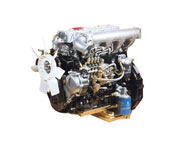
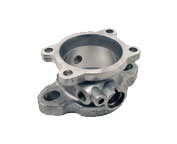
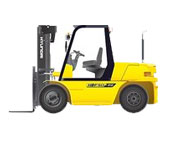
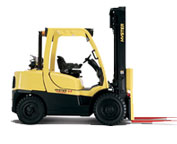
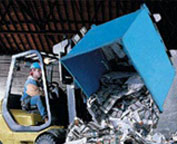
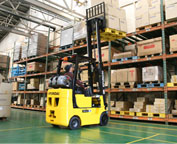
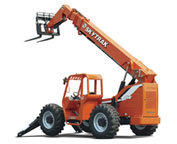
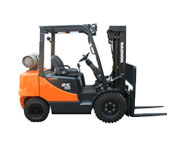
Lift Parts Express
TOLL FREE: 1-888-695-7994
LOCAL: 916-529-4758
2386 Fair Oaks Boulevard Ste. 100
Sacramento, California
forkliftpartssacramento.com
Email Us
About Us


